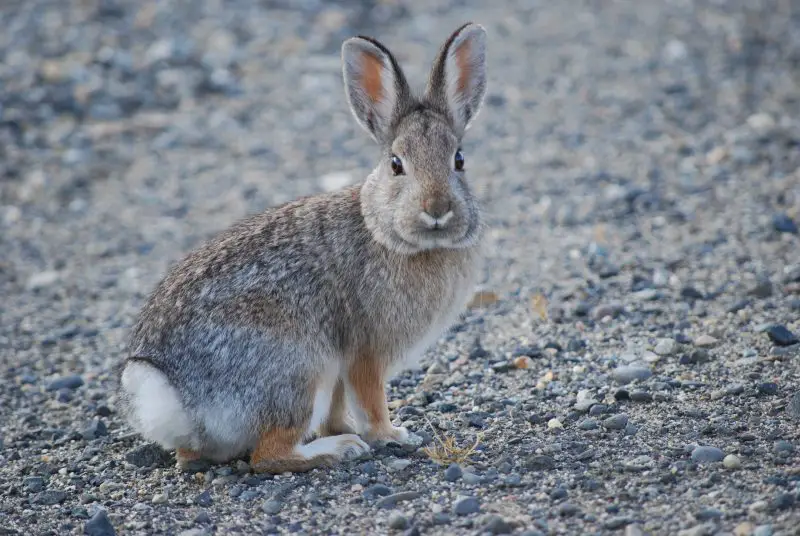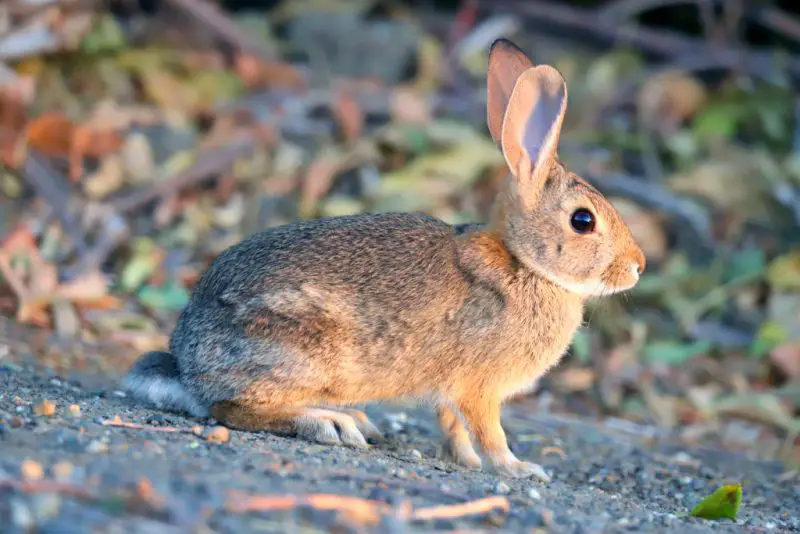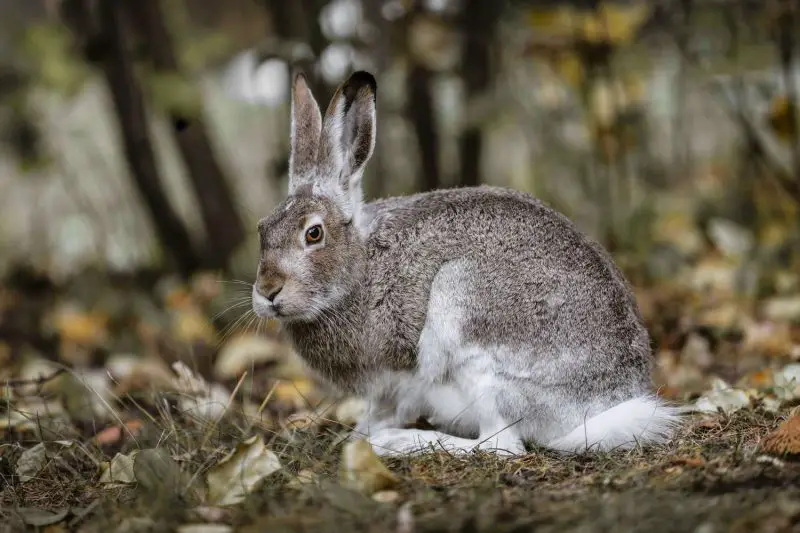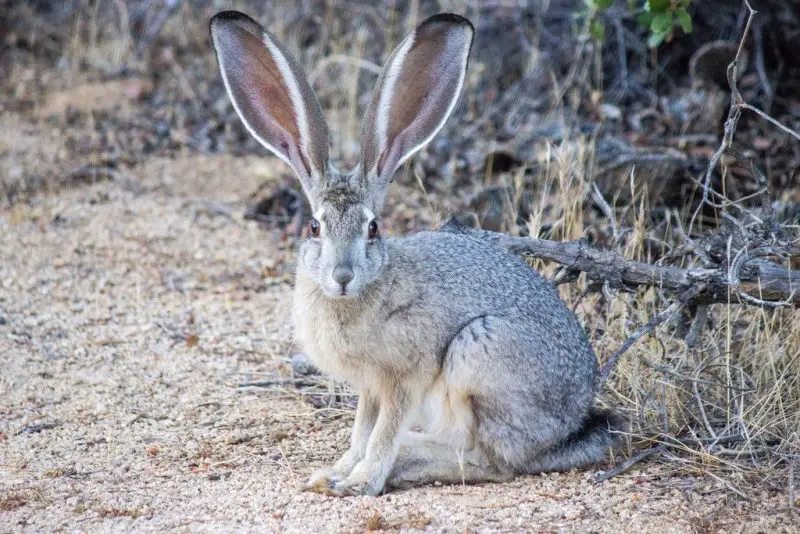Wild rabbits in Idaho inhabit diverse habitats, including sagebrush deserts, grassy plains, and mountain foothills. These small mammals are well adapted to the state’s diverse environments and play an essential role in local ecosystems.
The wild rabbits of Idaho include both cottontails and jackrabbits, each with distinctive features and behaviors. From the compact Mountain Cottontail to the swift White-tailed Jackrabbit, these species show remarkable differences in size, appearance, and habitat preference.
Exploring Idaho’s natural areas often provides opportunities to spot these fascinating creatures. Understanding their characteristics and where they live makes it easier to identify them and appreciate their presence across the state.
Types of Wild Rabbits Found in Idaho
Mountain Cottontail (Sylvilagus nuttallii)

he Mountain Cottontail is one of the most abundant wild rabbit species in Idaho, thriving in a wide range of habitats including sagebrush flats, dry shrublands, open grasslands, and rocky foothills. This species is well adapted to the state’s semi-arid environments and can be found at elevations ranging from low valleys to mountainous regions. Adults typically weigh between 2 and 3 pounds and measure about 13 to 15 inches in length, giving them a compact yet sturdy appearance. Their grayish-brown fur, mixed with subtle tones of rust and buff, helps them blend seamlessly into the dry and rocky landscapes where they reside.
One of the most reliable identification features of the Mountain Cottontail is its short, rounded ears, which are noticeably smaller compared to those of jackrabbits. The ears are edged with black tips, a helpful field mark for distinguishing this rabbit in the wild. As its name suggests, the species also carries a fluffy white tail that flashes when it runs, serving as both a warning signal to other rabbits and a distraction to predators. Compared to the Desert Cottontail, this species often looks stockier, with a slightly shorter tail and less prominent ears.
The Mountain Cottontail follows a crepuscular activity pattern, being most active at dawn and dusk when temperatures are cooler and predators are less active. Its diet is primarily made up of grasses, herbs, and leaves, but it is also highly adaptable in its feeding habits. During winter, when fresh vegetation is scarce, it survives on woody plants, bark, and twigs. Solitary by nature, this rabbit spends much of its time hidden in dense vegetation, rock crevices, or burrows made by other animals, relying on cover rather than speed to escape threats.
In Idaho, the Mountain Cottontail is widespread and can be found across southern and central regions, particularly in areas dominated by sagebrush and rocky terrain. It is often spotted along the edges of fields, foothills, and river valleys, where food and cover are abundant. Because of its adaptability to different elevations and its ability to survive in rugged terrain, it remains one of the most frequently encountered wild rabbits in the state. Its presence is especially noticeable in spring and summer, when populations peak and the rabbits are more active above ground.
Desert Cottontail (Sylvilagus audubonii)

The Desert Cottontail is another wild rabbit species present in Idaho, most frequently encountered in the southern part of the state. It thrives in arid environments such as dry valleys, desert basins, sagebrush flats, and open canyonlands. Adults typically weigh between 2 and 4 pounds, making them slightly larger than the Mountain Cottontail, and they average 14 to 17 inches in length. Their fur is a light grayish-brown, often with a sandy or buff tint along the back, while the underside is pale to whitish. This coloration provides excellent camouflage against Idaho’s desert soils and dry vegetation.
One of the key identification traits of the Desert Cottontail is its long ears, which are noticeably larger than those of the Mountain Cottontail. These oversized ears are not only used for detecting predators but also for thermoregulation, as they help the rabbit release excess body heat in hot, dry climates. The species’ trademark white, cotton-like tail is especially prominent when the rabbit bounds away, flashing with every leap and acting as a visual cue that confuses predators. Compared to the Mountain Cottontail, the Desert Cottontail has a more slender build and a slightly longer tail.
Behaviorally, the Desert Cottontail is well adapted to the challenges of desert living. Its diet consists of grasses, leafy plants, shrubs, and occasionally cacti pads, which also supply it with extra moisture in dry conditions. During the hotter months, it becomes more nocturnal, resting in shallow burrows, shaded rock crevices, or beneath thick brush to escape daytime heat. It emerges at night, dawn, and dusk to forage. Unlike jackrabbits, it does not rely on speed alone to evade predators but instead uses cover and quick zigzag movements to escape danger.
In Idaho, Desert Cottontails are most common in the southern regions, including the Snake River Plain, canyonlands, and desert valleys where sagebrush and open scrubland dominate. They are less common in the cooler, forested, or mountainous parts of the state, as their adaptations favor hot, dry, and open environments. In areas where agricultural land meets desert habitat, they can often be spotted along field edges, where food is abundant and cover is nearby. Their presence is most easily noticed at dawn and dusk, when they emerge from hiding to feed.
White-tailed Jackrabbit (Lepus townsendii)

The White-tailed Jackrabbit is the largest rabbit-like species in Idaho, with adults typically weighing between 6 and 10 pounds and measuring 18 to 24 inches in length. Despite its common name, it is a hare rather than a true rabbit, which explains its long legs, powerful build, and large ears. These adaptations make it well suited for life in wide-open landscapes, where speed and keen senses are crucial for survival. One of its most remarkable traits is its seasonal coat change: in summer, its fur is grayish-brown with darker streaks, while in winter it molts into a snowy white coat that provides effective camouflage against Idaho’s winter landscapes.
This jackrabbit can be identified by its size alone, as it dwarfs cottontails by several pounds. Its extremely long ears, tipped with black, are another distinguishing feature, not only aiding in heat regulation but also acting as an effective radar against predators. Unlike cottontails, it lacks a fluffy round tail; instead, it has a longer, flat tail with a white underside that becomes visible when the hare is running. Its body shape is lean and athletic, built for bursts of speed that can reach up to 40 mph, with zigzagging leaps that make it difficult for predators to catch.
Feeding habits of the White-tailed Jackrabbit vary by season. During spring and summer, it consumes fresh grasses, alfalfa, clover, and forbs, often venturing into agricultural lands to graze. In fall and winter, when green vegetation is scarce, it shifts to a diet of woody shrubs, sagebrush, and bark. Unlike the more social cottontails, jackrabbits tend to be solitary, spending much of their time resting in shallow depressions in the ground, called “forms,” instead of relying on burrows. Their solitary nature and preference for open areas set them apart from smaller rabbit species.
In Idaho, White-tailed Jackrabbits are most commonly found in southern and eastern regions, where expansive prairies, grasslands, and farmland provide both food and open space. They are also present in sagebrush country and high plains, particularly in areas where agriculture borders wild habitat. Their activity peaks at night, making them more frequently observed under moonlight or with the aid of vehicle headlights along rural roads. Because of their size, distinctive ears, and seasonal color change, they are one of the easiest lagomorphs to identify in Idaho.
Black-tailed Jackrabbit (Lepus californicus)

The Black-tailed Jackrabbit is another hare species native to Idaho, with its distribution mainly restricted to the southern parts of the state. It thrives in desert plains, open rangelands, and extensive sagebrush country, where its adaptations for speed and heat regulation give it an advantage. Adults typically weigh between 4 and 8 pounds and measure 18 to 24 inches in length, making them smaller than the White-tailed Jackrabbit but still much larger than cottontails. Their fur is grayish-brown with a coarse texture, often flecked with black along the back, which provides excellent camouflage against arid desert soils.
One of the most distinctive traits of this species is its namesake black tail, which stands out clearly against its gray-brown body when it is in motion. In addition, its long ears, tipped with black, not only aid in predator detection but also help with temperature regulation by releasing excess heat. Compared to the White-tailed Jackrabbit, this species has slightly slimmer proportions and darker overall coloration, making field identification easier when both occur in overlapping ranges.
The Black-tailed Jackrabbit is built for speed and endurance, capable of running at speeds up to 40 mph and making sharp, erratic leaps to confuse predators. Unlike cottontails, which often freeze or rely on cover, this hare depends almost entirely on flight to escape danger. Its diet is varied and highly adaptable, consisting of grasses, forbs, desert shrubs, and sometimes agricultural crops. During dry seasons, it can survive on moisture-rich plants, allowing it to persist in some of Idaho’s harshest desert landscapes.
In Idaho, Black-tailed Jackrabbits are most commonly found in southern desert valleys, sagebrush flats, and wide-open rangelands where vegetation is sparse. They are rarely encountered in forested or mountainous regions, as they prefer open habitats that allow them to detect and outrun predators. Populations are often concentrated around the Snake River Plain and the canyonlands of southern Idaho. Because of their nocturnal and crepuscular habits, they are most easily seen at night or during twilight hours, often spotted feeding along the edges of sagebrush fields or dirt roads.
Best Time and Place to Observe Wild Rabbits in Idaho
The best time to observe wild rabbits in Idaho is during the early morning and late evening hours, when they are most active. At these times, cottontails and jackrabbits emerge from cover to feed, making them easier to spot in open fields and along the edges of brush. Midday hours are less productive since rabbits usually hide from predators and avoid the heat.
In terms of seasons, spring and summer provide excellent opportunities to see them, as vegetation is abundant and rabbits are more active above ground. Winter is also a good time for spotting jackrabbits, especially the White-tailed Jackrabbit, whose coat turns white and stands out against snowy fields.
The best places to observe wild rabbits in Idaho include sagebrush plains, desert valleys, and grasslands in the southern part of the state. Areas near Boise, the Snake River Plain, and agricultural lands are reliable spots for Desert Cottontails and Black-tailed Jackrabbits. In central and eastern Idaho, foothills, meadows, and rocky shrublands are prime locations for Mountain Cottontails and White-tailed Jackrabbits.
FAQs about Wild Rabbits in Idaho
What types of wild rabbits live in Idaho?
Idaho is home to four main species of wild rabbits and hares: the Mountain Cottontail, Desert Cottontail, White-tailed Jackrabbit, and Black-tailed Jackrabbit. These species occupy different habitats, ranging from sagebrush deserts to grassy foothills and farmlands.
What is the most common rabbit in Idaho?
The Mountain Cottontail is the most widespread wild rabbit in Idaho, especially in sagebrush habitats and rocky foothills. It adapts well to a variety of landscapes, making it the rabbit species most frequently encountered across the state.
Where can I see jackrabbits in Idaho?
White-tailed and Black-tailed Jackrabbits are most often found in southern Idaho’s open plains, deserts, and grasslands. The White-tailed Jackrabbit prefers prairies and agricultural lands, while the Black-tailed Jackrabbit thrives in dry sagebrush country and desert valleys.
Do wild rabbits in Idaho change color in winter?
Yes, the White-tailed Jackrabbit undergoes a seasonal color change. In summer, its fur is grayish-brown, but in winter, it molts into a white coat to blend with snowy environments. Cottontails and Black-tailed Jackrabbits, however, keep their brownish-gray coats year-round.
Are wild rabbits in Idaho active during the day?
Wild rabbits in Idaho are crepuscular, meaning they are most active during dawn and dusk. This behavior helps them avoid the heat of midday and reduces the risk of predation. They may also be active at night, especially in open farmlands and grasslands.
Can I hunt wild rabbits in Idaho?
Yes, rabbit hunting is allowed in Idaho, but it is regulated by state wildlife laws. Seasons, bag limits, and permitted species vary, so hunters must check with the Idaho Department of Fish and Game for current regulations before heading out.






